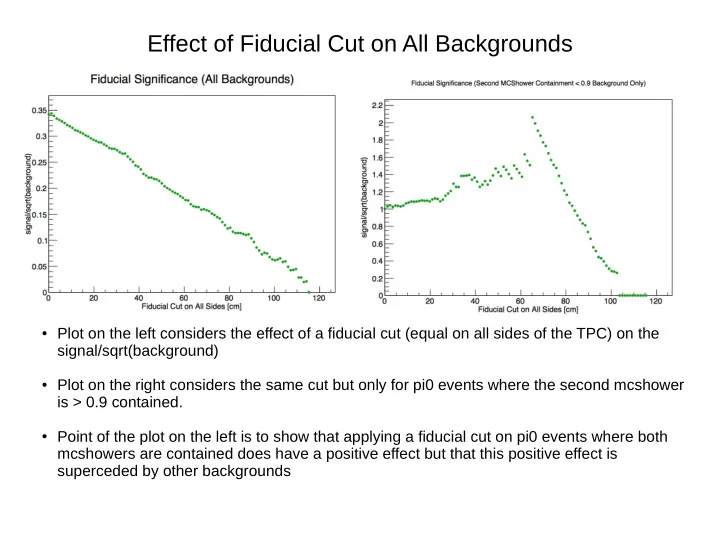

Effect of Fiducial Cut on All Backgrounds ● Plot on the left considers the effect of a fiducial cut (equal on all sides of the TPC) on the signal/sqrt(background) ● Plot on the right considers the same cut but only for pi0 events where the second mcshower is > 0.9 contained. ● Point of the plot on the left is to show that applying a fiducial cut on pi0 events where both mcshowers are contained does have a positive effect but that this positive effect is superceded by other backgrounds
Distance Between Reco-Shower Vertex and Reco-Nu Vertex ● Considering only background events where the reco-shower has it’s largest charge contribution from an electron mcshower (i.e. a “well reconstructed” electron reco-shower). ● Note that requiring this selection leaves only 40 events in the background sample (low stats). ● There are some electron shower events where the distance between the reco-shower vtx and reco-nu vtx is larger. This is likely due to a failure in the vertex algorithm. ● Applying a cut at lower distances increases sig/sqrt(back) but also decreases efficiency considerably.
Distance Between Reco-Shower Vertex and Reco-Nu Vertex ● Considering only background events where the reco-shower has a non-zero charge contribution from an electron mcshower. ● Similar result to looking at only “well reconstructed” electron reco-showers. Can apply a low distance cut but there are some events at larger distances.
Shower Energy / Shower Length ● Considering only background events where the selected reco-shower has it’s largest charge contribution from a photon mcshower that is the child of a π 0 and the second child mcshower makes its largest charge contribution to the same selected reco- shower (two π 0 showers merged into one). ● Hoping having two mcshowers merged into one reco-shower would have a larger “energy density” than a single mcshower, however distributions are very similar. Tried cuts in both directions.
Delta Mass Using Truth Information (GENIE level) ● Plot on the left considers only Δ + events where the proton and photon children exit the nucleus and are the only particles to exit the nucleus. ● Lower energy bump on the left side of the distribution. ● Plot on the left has same selection requirements plus a further 0.22 GeV energy cut on protons which removes low energy bump. ● Δ mass = 1.232 GeV
Recommend
More recommend